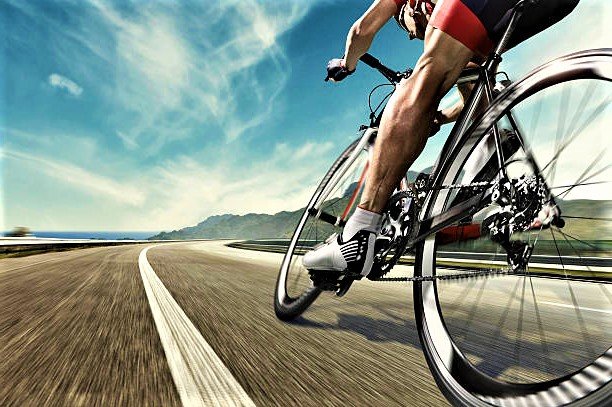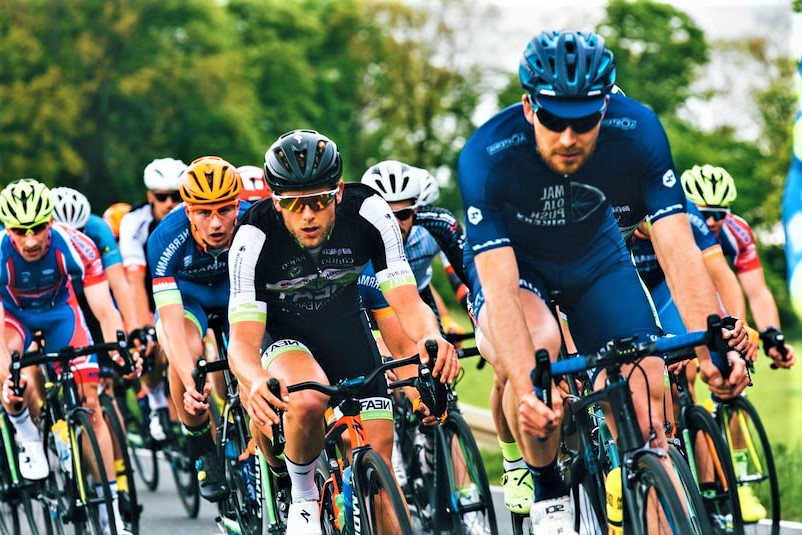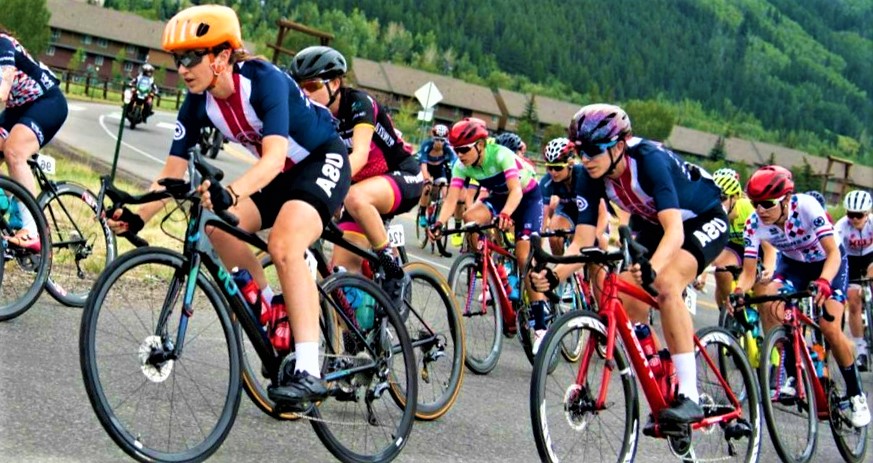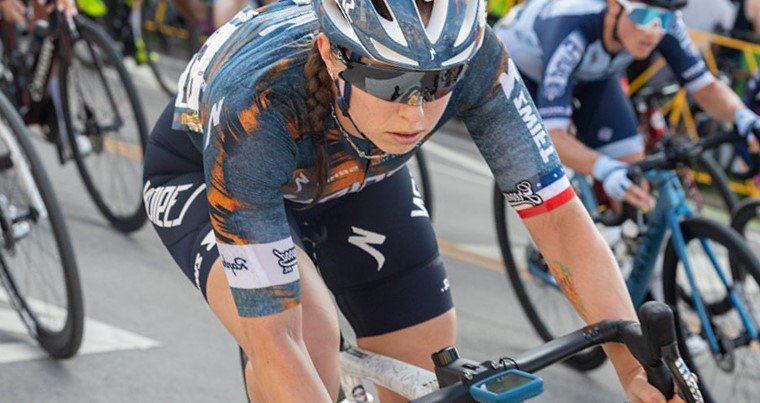road bicycle racing

road bicycle racing
Watch How You Enjoy Cycling – Part 1: A Bike Isn’t a Marathon
The first Grand Tour of the year is just around the corner. This is a great opportunity for DT to write a guide for new sports followers who may not yet understand the dynamics of the sport. I hope this series of articles will help those interested in watching professional bicycle racing get closer to it and “get involved” in it more.
This article will be divided into four parts. To introduce the sport slowly to be easy to understand with readers of all levels.
First of all, I have to admit that professional road cycling is a very difficult sport to understand and understand, and there are many battles. There are dozens of teams competing individually. There are many types of wins, competing for 4-7 hours at a time, and sometimes like watching paint dry. I watched for hours and nothing happened. Unlike stadium sports, there are two teams competing. There is a clear way to calculate points. There are events that catch the public’s attention all the time.
But if we understand the dynamics of road bike game it just gets more and more fun. Because they are beginning to understand the method and can read the game.In this part 1, we will put down 5 basic knowledge to understand the nature of bike racing first.

1. Why do cyclists have to ride in groups?
The first thing should be obvious. But it must be reiterated, ” A bike is not the same as a marathon .” Although it’s basically the same as traveling from point A to point B, what sets a road bike apart is its wind resistance.
On a flat track, pedaling behind the front bike requires 30-40% less effort due to the wind shield. This is why cycling should be done in groups . While on your way up the hill this force saving ratio is gradually reduced as the object struggling to move forward gradually switches from wind resistance to gravity. Even when the road is steep, it will no longer be helpful to follow the vehicle in front of you.
This means cycling is not an individual A → B measure of strength like a marathon. But there is always the problem of saving energy from group riding.
2. Why is there a master group? Why is there a runaway group?
There are only two components that are important to cycling, called splits and pelotons (French for little ball, which is a group of cyclists spinning closely together). It can be translated into Thai as “escape group” and “home group”.

From item 1, it can be seen that the objective of a bicycle race is to travel from A → B in the least possible time . Great combos going from start to finish.
However, in a race, the first person to cross the finish line is the winner. And not everyone runs in front of the finish line so quickly, so runners who know they can’t hope to win run a few hundred meters in front of the finish line. So another way to win had to be found. This is the early escape from a large group, called the “escape group” or separation. Generally, riders begin to flee as soon as they pass the neutral starting point (there is no escape zone), during which time riders switch to the front. Go back and forth to find the position you want. Until you pass the forbidden area and then really compete
When someone ran away inevitably there would be a hunt. This repellent is called the “core group”, which is always outnumbered. When a certain number of the group in the main group escapes, there will always be people who want to leave. But he didn’t come out in time for him or who thinks that whoever escapes is so good, if he let go, he will definitely win, he will chase until he catches up. This cat-and-mouse cycle continues until the equilibrium is reached where everyone is satisfied with the escape group. The person who wanted to escape was already in the escape group. Those who are good are put into a large group. The fleeing group will gradually settle down and move away, while the larger group will weaken and continue circling.
As the finish line nears, the lead group will race to catch up with the fleeing group waiting for them. Victory was achieved in two main cases: the fleeing group fled; Racing to the line from a small group, or in other cases, the main group catching up. He will compete on a sprint in the line from a large group. Such is the dynamics of the flat track that are easy to understand.
In a race where the field is flat the lead group tends to catch the small group almost 100% due to the wind resistance described in Item 1, using a large group to lead a large group for just a moment. In the last tens of kilometers of the race he will help protect the wind, save energy and always be faster than a few escape groups who have helped ride the wind for hundreds of kilometers.
(The dynamics of this type of competition usually only happens at the professional level. But for amateur games it is clear that most of them differ in strength. And the test will be carried out until only a few of the strongest people remain. Rarely does it end in a large team race)
Eurosport conducted a working group that explains the breakaway chase dynamics well, let’s see.
While the race was on its way up it usually came down to who is stronger. Especially the race that ends on top of the mountain. We often see 1-3 people reach the finish line first, because it is in a flat way. People who may be 5% less powerful than others can count on windshield to save up to 30-40% energy as mentioned above. It helps make up for the difference and makes it harder to get to the finish line together. Less strong people can’t rely on strong people to stop the wind from reaching the finish line. Therefore, whoever is stronger will reach the peak first.
The dynamics of ridge or hill courses tend to be more complex than those of flat courses. There are often large groups where there was an escape group in the first place . A group separates from the large group to chase the fleeing group in front. Or the fleeing group at the front shoots one of them and flees the group again (to enter the line alone)
When broadcasting, there will be graphs on the screen telling how far ahead the runaway group is over the next group. How far is the subsequent group ahead of the main group? In French, there’s tête de la course, poursuivant, and peloton , respectively, but basically there’s a runaway and a runaway. Just spread out in group 1 leading group 2, group 2 leading group 3, and so forth.

3. What are the different types of riders?
In competition at the highest level it is clear that every competitor has a different experience. And we can classify 3-4 types of good cyclists.
If football consists of goalkeepers, defenders, midfielders and attackers, then road bikes consist of runners, climbers and climbers.
A sprinter rider can release massive bursts of energy in a short amount of time. It quickly outperforms competitors, but the working period is somewhat short. In contrast to the timer rider there will be a body suitable for continuous effort for a long time. But it’s not as good at short bursts as sprinters.
This riding style can be explained by a simple graph known in fine technical language as the Critical Force Curve.
The chart below shows the effort put in by every cyclist on the planet, from amateur to professional.
The vertical axis represents power (power, watts), and the horizontal axis represents time (time, minutes). The graph represents the average force that we can exert more per period, for example, 5 seconds of exercise can be x units, 1 minute of exercise is 50.% of x, 60 minutes of effort can be 20% of x, etc.
Let’s say there are three equally talented professionals, all of whom are trained to the highest standard. What will make them different is that each person exercises better than their peers for different periods of time. For example runners outpace others in 5-10 seconds work, hill climbers in 1-2 minutes, cyclists run best in 40-60 minutes, for example.
4. Compete as a team, but why is there only one winner?
In global competition these differences are small. But it is an important determining factor. Everyone must use their power in the right place at the right time in every field. For example, runners must get to the front of the line with a large group. The climber had to rely on the slopes near the finish line to escape from the group first. And the timed cyclist had to flee the group just short of the finish line, for example.
The nature of cycling is slightly different from that of other team sports: results and victories go to individuals, not teams. Paris-Roubaix first at the finish line, and as a result of the victory, the list of winners will be from Mr. “First”, and not from the Mr. “A” team.
Even if A transfers to another team, this is considered to be Mr. A’s performance, and even then, he will compete with other teams.
As such, it is a sport that honors the performance of individuals rather than teams, but on the other hand, no single cyclist can win a race alone. Always need teammates to help.
5. Why is this team quiet on the mountain stage? Why didn’t this team win the flat stage?
Currently, each top-level race has 15-24 teams combined, and each team has 7-8 riders. Assist, who’s in charge of the wind shields, delivers supplies, hands over his own bike to the team leader if the leader’s bike has a problem, etc.
From Item 3, you can see that each team’s “dead card” is not the same, for example, if team A’s dead card is a runner, you will see that team A intends to turn on a flat field. And it’s not so much a matter of climbing day or if Team B’s trump card is a mountain climber, Team B will see Team B help each other chase the fleeing group down the uphill field. For his climbers to reach the foot of the mountain before everyone else and then continue playing card duties then on a steady day, Team B would play no part. alternative like this.
Therefore, it can be seen that even at the beginning, dozens of teams start at the same time, but only a few teams have a chance to win in one day. Teams that think they are out of luck will pull away from the wind in the main group to save energy for the next day.
So why can’t one team have as many trumps or favorites as these? This is because good riders have high prices, and the team has to think about what style of riders they should focus on in hiring. To achieve the main goals of the team. But with limited team resources and the rule that each field cannot select more than 8 contestants, which means that one team cannot flawlessly send two types of favorites to the same field because there will be other teams with one clear objective to choose to send team leaders and subordinates committed to that goal. No need to share resources with other problems.
Take, for example, a team called Quickstep Floors, which has invested heavily in its sprinters teams. Hoping to keep the champ on the flat track the only riders he chooses to compete will be primarily flat roadsters. Don’t focus on winning stage races that require a leader and many assistants.
On the contrary, some teams want variety. I want to have flat and mountain works in the same list. This means that the team must field both types of team leaders. But the two leaders may have to involve their aides. Resulting in fewer assistants per boss than teams with one clear goal
As such, it is not surprising why some team we love have no results at all. Maybe it’s because the team doesn’t have good riders on this trail.
At this point, it is enough to understand the basics of road bike racing, and in the next chapter we will look at the types of competitions. What is the difference between a one-day course and a stage race? A mountain, speed and total time bonuses, what is it?

